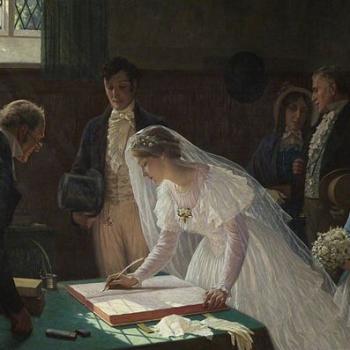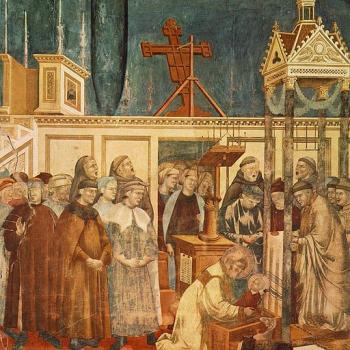I’ve been thinking about gender differences recently. The genesis of this was a discussion in my diaconate class about women’s ordination. This led me (eventually) to an on-line essay by Peter Kreeft on women’s ordination and sexual symbolism. The heart of his argument, as best as I can discern, is that
To understand this second proposition, we must distinguish “male” from “masculine.” Male and female are biological genders. Masculine and feminine, or yang and yin, are universal, cosmic principles, extending to all reality, including spirit….Male and female are only the biological version of cosmic masculine and feminine.
I found parts of this argument dubious, but it did get me thinking about the differences between men and women. On one level, they are obvious. As the song “Doin’ What Comes Natur’lly” from Annie Get Your Gun puts it:
My tiny baby brother, who’s never read a book,
Knows one sex from the other,
All he had to do was look!
God created mankind in his own image,
in the image of God he created them;
male and female he created them.
There is neither Jew nor Gentile, neither slave nor free, nor is there male and female, for you are all one in Christ Jesus. (Gal 3:28)
It should be emphasized here that man owes his authoritative pre-eminence in society not to personal achievements but to the appointment of the CreatorThe sexes can never be on an equality as regards studies pursued at a university.[T]he political activity of man is and remains different from that of woman, as has been shown above. It is difficult to unite the direct participation of woman in the political and parliamentary life of the present time with her predominate duty as a mother.
Because the one [man] rules, the other [woman] is ruled; the one ought to command, the other to serve. For where the flesh commands and the spirit serves, the house is turned the wrong way. What can be worse than a house where the woman has the mastery over the man? But that house is rightly ordered where the man commands and the woman obeys. (On John, Tractate 2.14)
There is another kind of subjection which is called economic or civil, whereby the superior makes use of his subjects for their own benefit and good; and this kind of subjection existed even before sin. For good order would have been wanting in the human family if some were not governed by others wiser than themselves. So by such a kind of subjection woman is naturally subject to man, because in man the discretion of reason predominates. (Summa Theologica I, qu. 92, art. 1, ad 2)
Every man experiences evil around him and within himself.This experience makes itself felt in the relationships between man and woman. Their union has always been threatened by discord, a spirit of domination, infidelity, jealousy, and conflicts that can escalate into hatred and separation. This disorder can manifest itself more or less acutely, and can be more or less overcome according to the circumstances of cultures, eras, and individuals, but it does seem to have a universal character.According to faith the disorder we notice so painfully does not stem from the nature of man and woman, nor from the nature of their relations, but from sin. As a break with God, the first sin had for its first consequence the rupture of the original communion between man and woman.Their relations were distorted by mutual recriminations; their mutual attraction, the Creator’s own gift, changed into a relationship of domination and lust… (CCC 1606-7)













